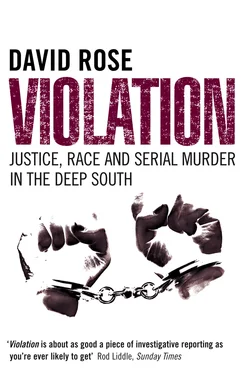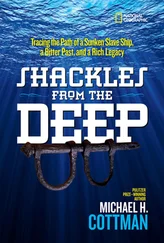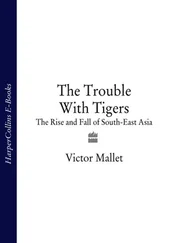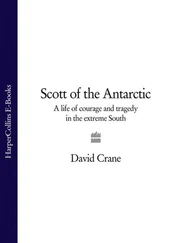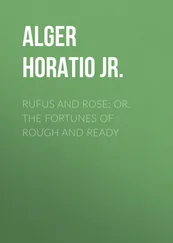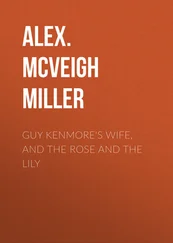Behind Ashburn’s death was also another agenda, which concerned the matter of his killers. His murder was a scandal of national significance, and the ensuing investigation and eventual trial were widely reported. General William Meade, the former federal commander at Gettysburg who was now in charge of Georgia’s military occupation, appointed two famous detectives to bring the assassins to justice – H.C. Whitley, who had investigated the plot to kill Abraham Lincoln, and William Reed, a veteran of the failed impeachment of Lincoln’s far from radical successor, President Andrew Johnson. During the spring of 1868 they arrested at least twenty-two persons, most of them whites from Columbus, who were said to be men of the utmost respectability. Twelve were eventually charged with the murder, and their trial began at the McPherson barracks in Atlanta on 29 June – not by an ordinary civilian court, but by a military commission, a panel of federal military officers, because Georgia had not yet been readmitted to the Union.
According to contemporary reports in Northern newspapers, the prosecution presented a formidable case. The Cincinnati paper the Commercial claimed, ‘The testimony of the prosecution was crushing – overwhelming, and the cross examination, in the hands of eight illustrations of the Georgia bar … did not in the least damage it.’ The only evidence presented by the defence had been alibis which did not stand scrutiny.
However, by the time this assessment was published at the beginning of August, it was too late. The defendants’ guilt or innocence was no longer at issue. That spring, elections had been held for a new Georgia Assembly, which until now had resisted the Fourteenth ‘equal rights’ Amendment, so prolonging the military occupation. On 21 July, its Democrat diehards abruptly changed their minds and ratified the amendment. The fate of Ashburn’s alleged killers had been settled by an extraordinary deal between Southern white leaders and the federal government, in which the prisoners’ freedom, as Worsley puts it, was ‘Georgia’s reward’. On 24 July, General Meade issued orders to dissolve the military commission. Next morning, the prisoners returned to Columbus, to be met at the railroad station by a large, exultant crowd. In theory they had been released on bail, pending future prosecution by the restored civilian authorities. In practice, there would be no further effort to put them or anyone else on trial.
For the former defendants’ many Southern supporters, it was not enough that they were free: they had to be seen as utterly innocent, as almost-martyred victims of their enemies’ radical zeal. Hence, at one level, the need for the claim that Ashburn might have been killed by African-Americans or white members of his own party: if the Columbus prisoners were innocent, there had to be alternative suspects. Meanwhile, there was another battle for future historical memory to be fought. Upon their release, nine of the prisoners issued a statement, printed next day by the Columbus Sun. It said that the prosecution witnesses had been suborned by ‘torture, bribery and threats’, including the use of the ‘sweatbox’. Meanwhile, the defendants had been held at Fort Pulaski in conditions of inhuman cruelty:
The cells were dark, dangerous, without ventilation, and but four feet by seven. No bed or blankets were furnished. The rations consisted of a slice of pork fat [original italics] three times each week. A piece of bread for each meal, soup for dinner and coffee for breakfast, finished the bill of fare. An old oyster can was given each prisoner, and in this vessel both coffee and soup were served … Refused all communication with their friends, relatives or counsel, they were forced to live in these horrid cells night and day, prostrated by heat, and maddened by myriads of mosquitoes. The calls of nature were attended to in a bucket which was removed but once in twenty-four hours.
In some quarters the prisoners’ allegations were vehemently denied. According to the Cincinnati Commercial , their supporters in Georgia were guilty of ‘moral terrorism’, which ‘made it a crime to entertain any opinion but the one most decided as to the[ir] innocence’. Appalled by the claims of torture and ill-treatment, General Meade issued his own public rebuttal, accusing the Georgia newspapers of making false and exaggerated statements for political purposes, and insisting that they had ‘no foundation’. He ended his remarks with some trenchant comments about the city where Ashburn died: ‘Had the civil authorities acted in good faith and with energy, and made any attempt to ferret out the guilty – or had the people of Columbus evinced or felt any horror of the crime or cooperated in any way in detecting its perpetrators, much that was seemingly harsh and arbitrary might have, and would have been, avoided.’
There were two further layers of significance to the murder of George Ashburn. In a case of the highest importance and profile, positions had been taken not in response to evidence, but on the basis of partisan beliefs and allegiance. And at its end, resolution had not come about through a court’s dispassionate verdict, but through a political deal, itself the result of the vexed and edgy relationship between the Union and the states of the South. Not for the last time in Columbus, the rule of law had been shown to be a contingent, relative concept. Realpolitik had taken precedence over justice.
Even in Georgia, cloudless nights in January bring frosts, and bands of mist that collect in hollows, clinging to the trees. The cold muffles sound. As I walked amid the lanes and shrubbery of Wynnton one evening at the start of 2001, I found it easy to imagine how an intruder might have crept undetected between the pools of shadow, moving in on human prey without so much as the crackle of a twig. Twenty-four years earlier, in the weeks after Kathleen Woodruff’s death, the Columbus police stepped up their patrols again, joined by their many allies. By January 1978, some of the task force officers were giving in to despair, and hinted to reporters that they were beginning to think that the stocking strangler possessed supernatural powers. Trying to catch him, they suggested, was like trying to hunt ‘a will o’the wisp, a ghost’.
If science couldn’t stop the killer, the authorities hoped to rely on sheer numbers. Earnestine Flowers, a childhood friend of Carlton Gary, was working as a Sheriff’s Deputy. ‘There were guys from the hills of Tennessee who knew how to track people; Military Police from Fort Benning; the Ku Klux Klan; people from other Police Departments who wanted to volunteer. We had night lights, people hiding up in trees; that new night vision thing which had just come out; dogs. And yet we were getting so many calls. People were so afraid. I don’t mean only the people who lived there. I was terrified, too. I was out on patrol, shaking with fear. I remember thinking, “I can’t do this, night after night; I gotta get myself assigned as a radio operator. I gotta get myself inside the building!”’
If there was a point when Columbus became immobilised by fear, it came with what law enforcement staff still call the ‘night of the terrors’ – the early hours of 11 February 1978. It began with an attempted burglary at the Wynnton residence of a retired industrial magnate, Abraham Illges. An imposing building, a pastiche of a medieval castle, the Illges house had a drive that opened on to Forest Avenue, in the heart of the territory haunted by the strangler. On 1 January the house had been burgled, and while Mr and Mrs Illges slept, a purse containing her car keys removed from the bed next to hers. Next morning, her Cadillac was missing. The couple then installed a sophisticated alarm system, with a pressure pad under the carpet near the front door, and at 5.15 a.m. on 11 February, someone stepped on it, automatically summoning the police. They arrived within a few minutes, and, in the belief that the burglar might be the strangler, summoned help. As officers, some with sniffer dogs, fanned out through the moonlit trees and gardens, the airwaves were alive with officers’ communications.
Читать дальше
